Imagine standing on the banks of the Chao Phraya River in Bangkok, Thailand, as the first rays of sunlight pierce through the morning mist, casting a golden glow upon the majestic silhouette of Wat Arun Ratchawararam Ratchawaramahawihan, better known as Wat Arun, the Temple of Dawn. This iconic Buddhist temple stands as a testament to Thailand’s rich cultural heritage and spiritual legacy.
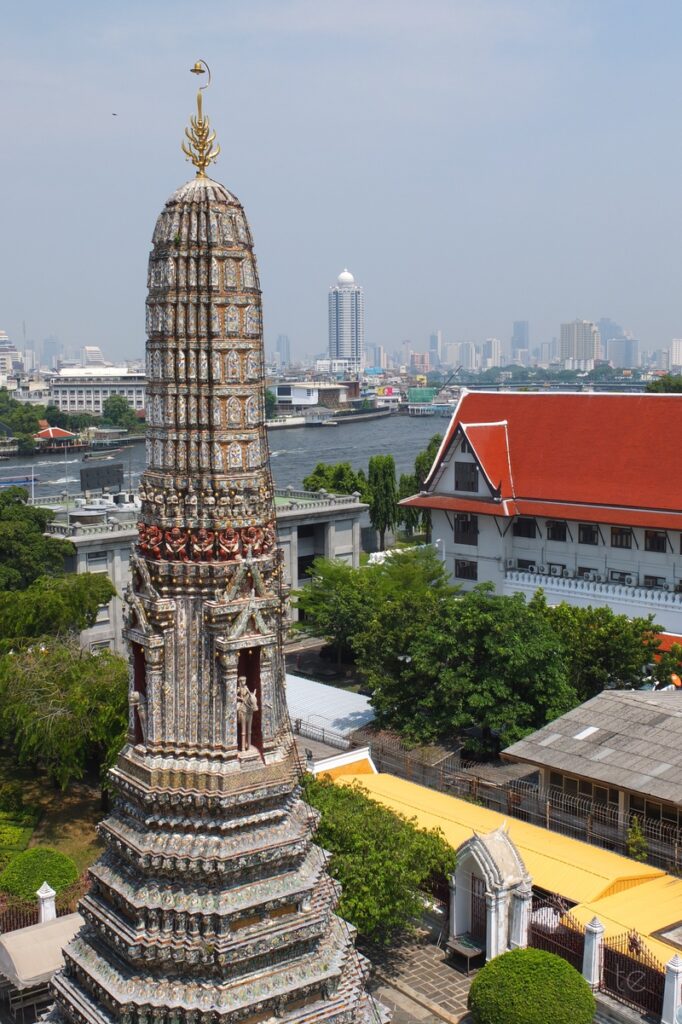
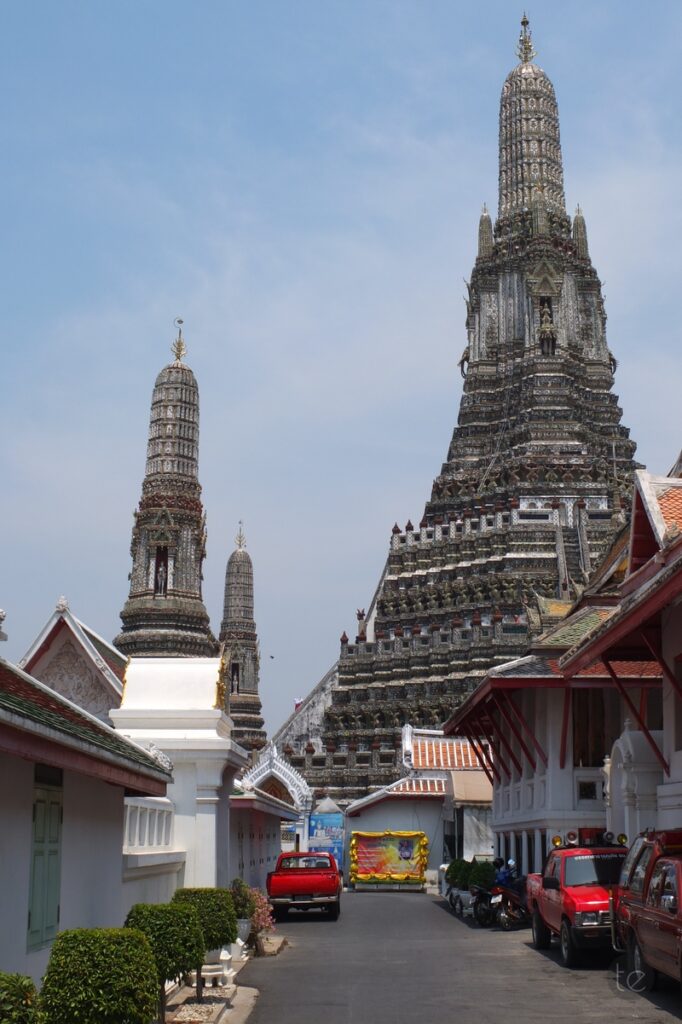
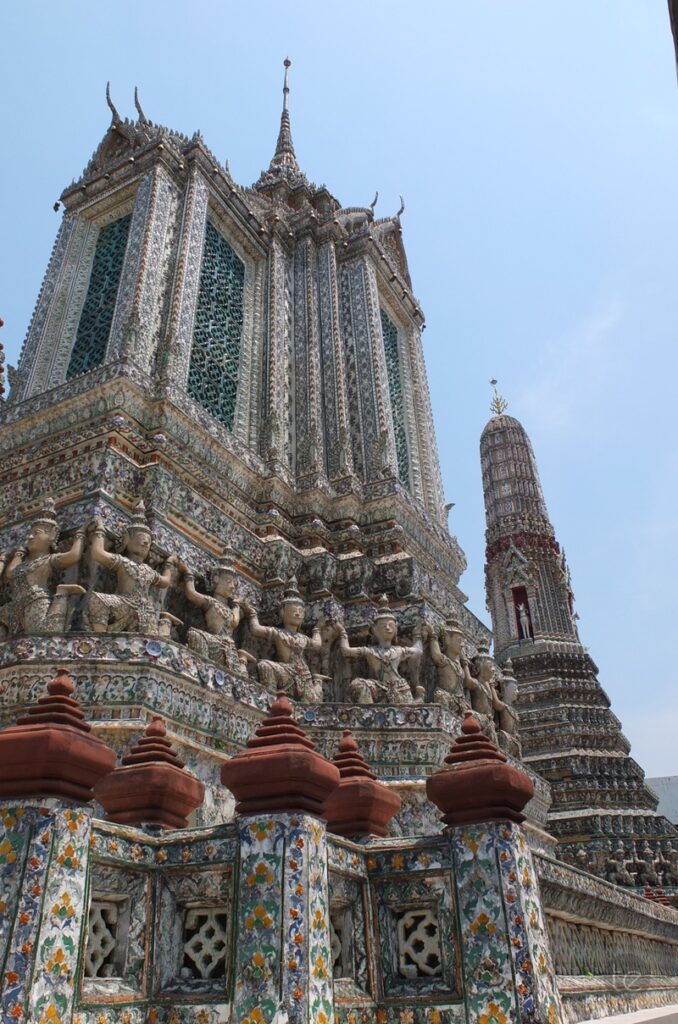
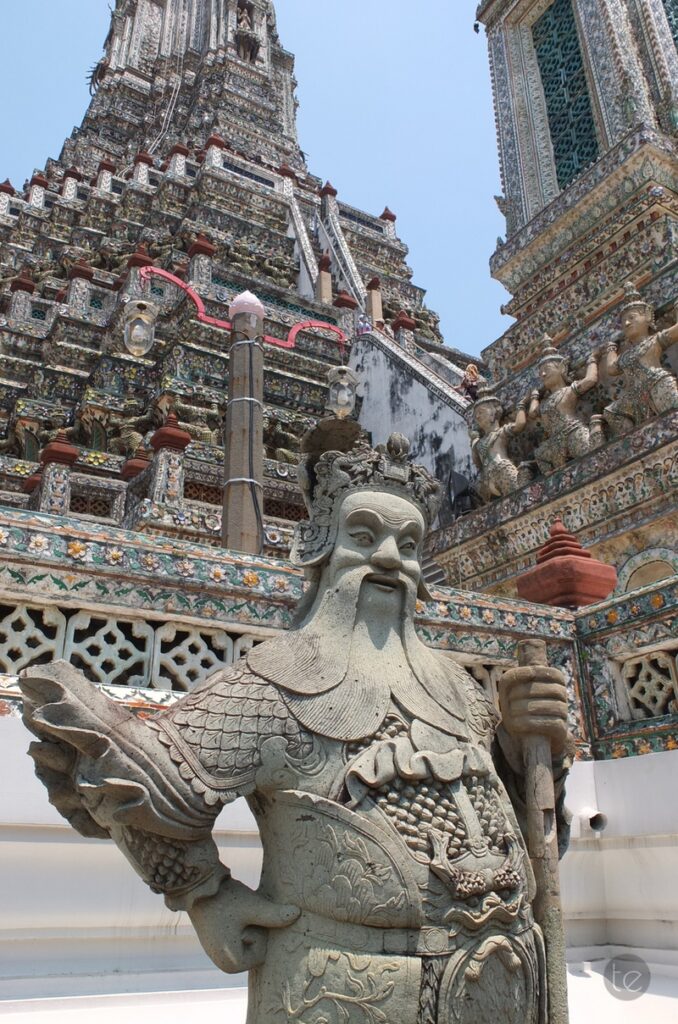
Wat Arun’s origins date back to the ancient Ayutthaya Kingdom, where a modest temple named Wat Makok stood on the site. Over the centuries, it evolved, gaining prominence during the reign of King Taksin, who renamed it Wat Chaeng. Legend has it that King Taksin, while passing the temple at dawn, vowed to restore its glory, thus earning it the moniker “Temple of Dawn.”
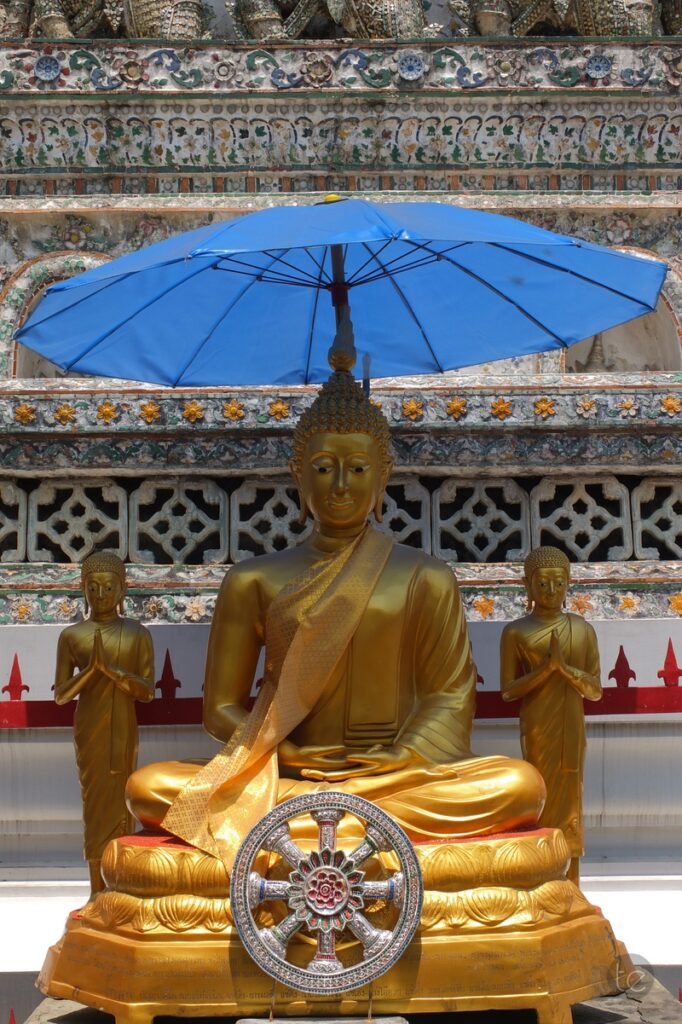
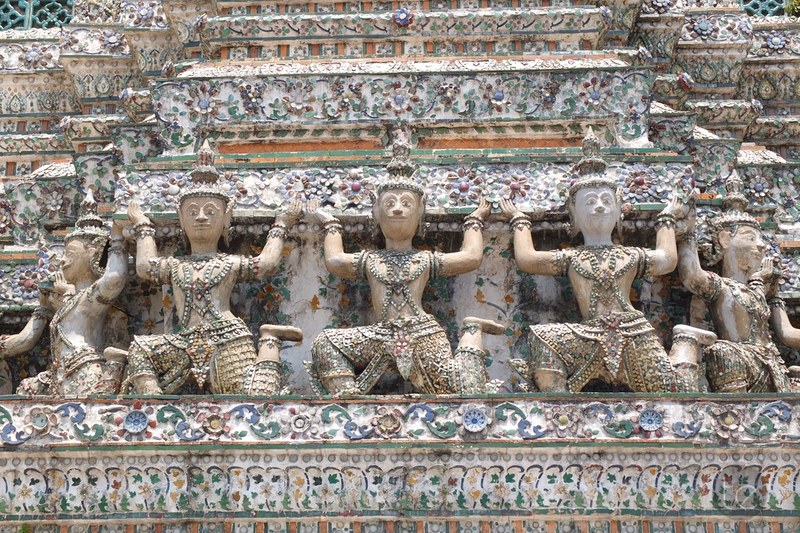
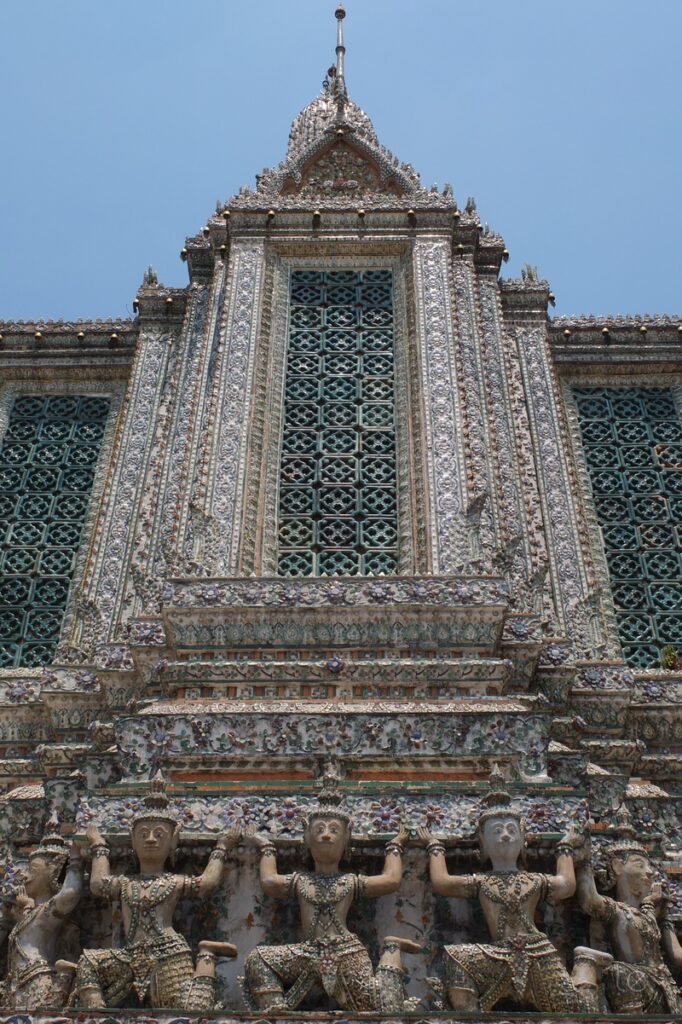
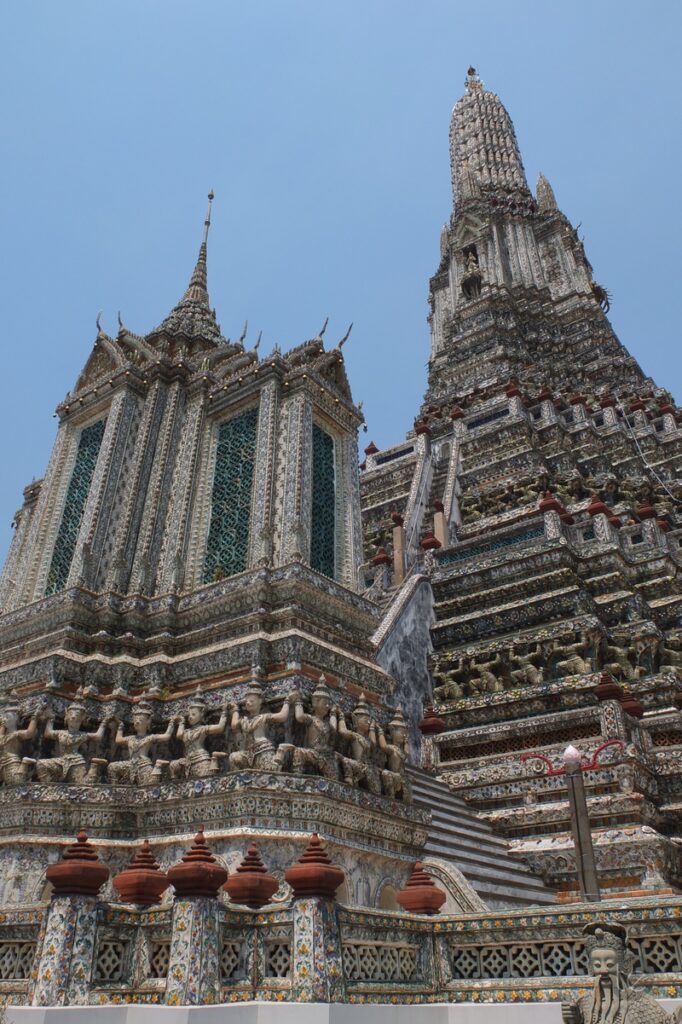
Under the patronage of successive monarchs, including Rama II and Rama III, Wat Arun underwent significant expansions and renovations, culminating in the construction of its distinctive prang, or spire, in the early 19th century. This architectural masterpiece, adorned with intricate designs and colourful porcelain, symbolizes the cosmological Mount Meru and stands as a beacon of spiritual enlightenment.
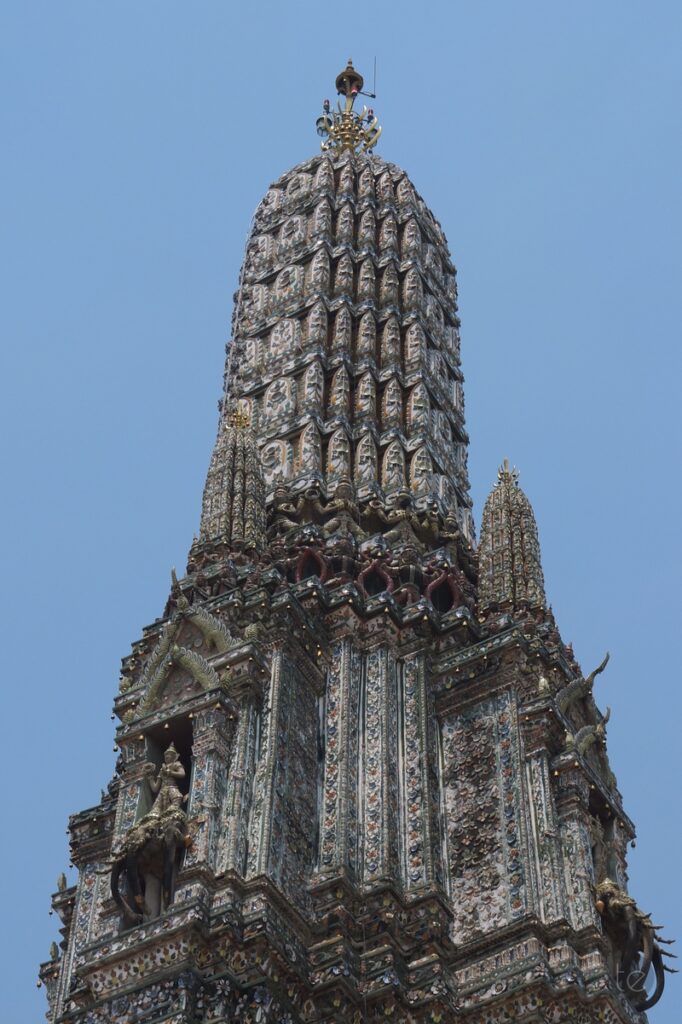
The centrepiece of Wat Arun is undoubtedly its central prang, soaring into the sky and adorned with fragments of porcelain that shimmer in the sunlight. Surrounding this central spire are four smaller satellite prangs, each telling its own story through intricate carvings and embellishments. At the riverside, six pavilions in the Chinese architectural style add to the temple’s unique charm, offering visitors a glimpse into Thailand’s cultural fusion.
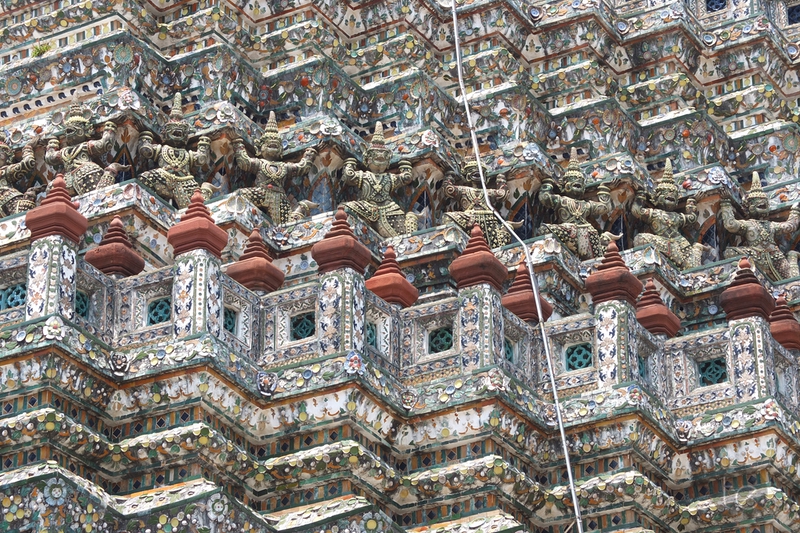
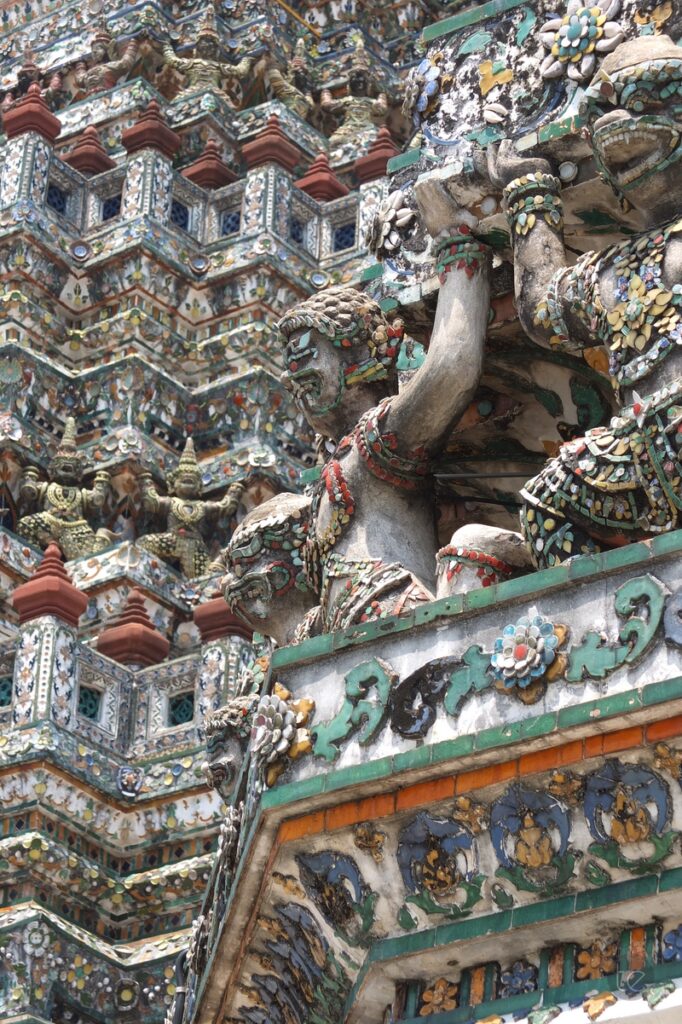
Stepping inside the Ordination Hall, visitors are greeted by the serene presence of a Niramitr Buddha image, believed to have been designed by King Rama II himself. The hall’s ornate decorations, including colourful ceramics and stuccowork, evoke a sense of reverence and awe, inviting contemplation and introspection.
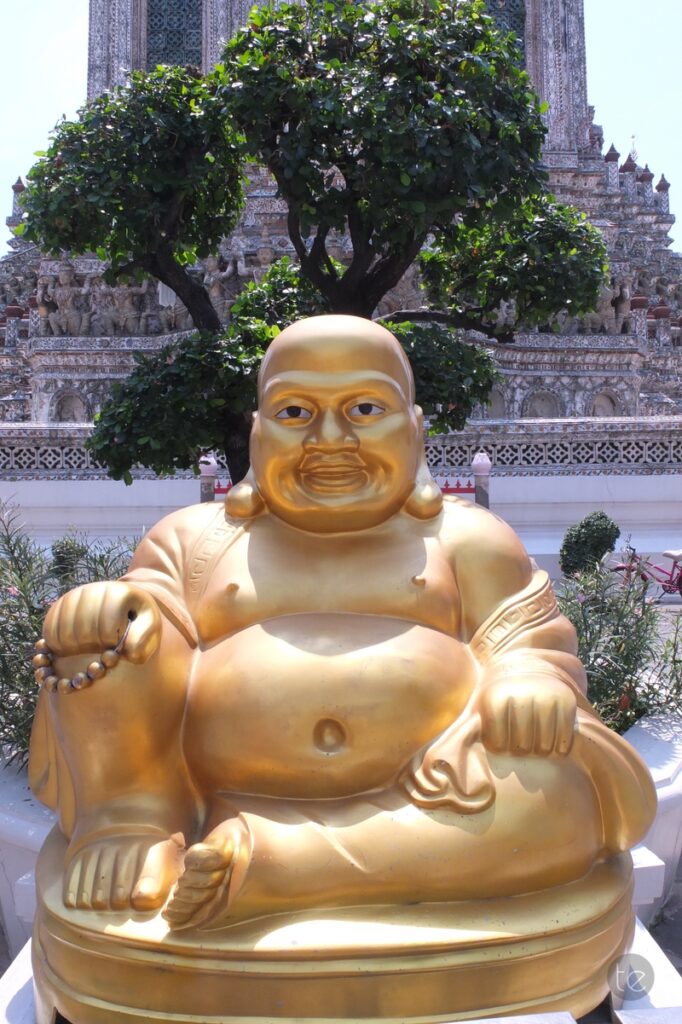
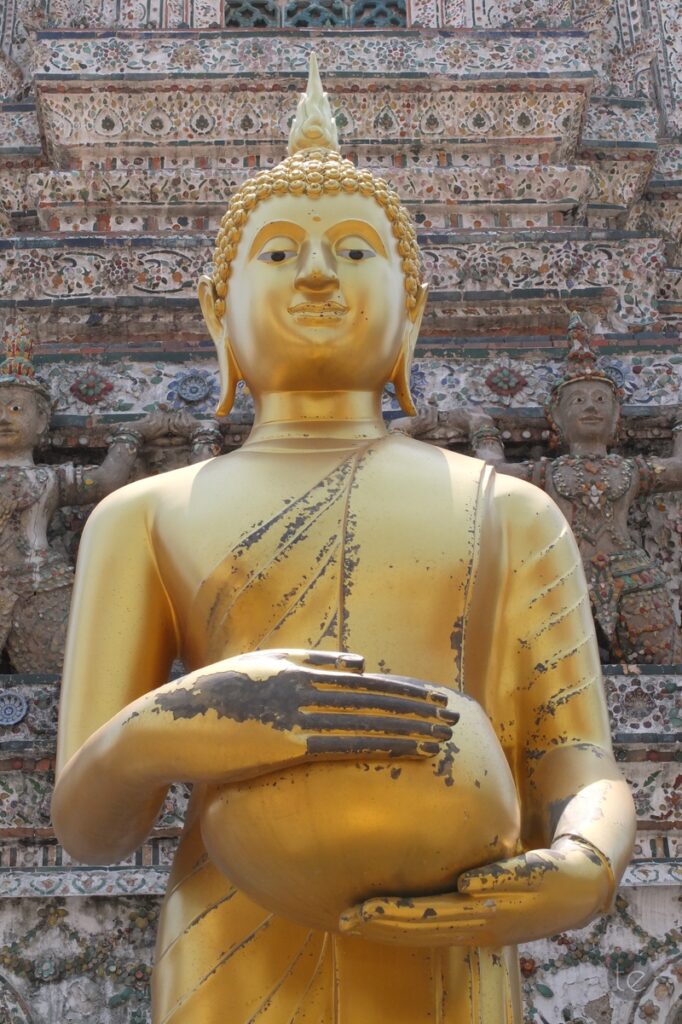
Beyond its architectural grandeur, Wat Arun is steeped in symbolism and spiritual significance. The central prang represents Mount Meru, the axis mundi of Hindu cosmology, while the surrounding satellite prangs pay homage to Phra Phai, the wind god. Intricately carved demons guard the entrance to the ubosot, depicting characters from the Ramakien, Thailand’s national epic.
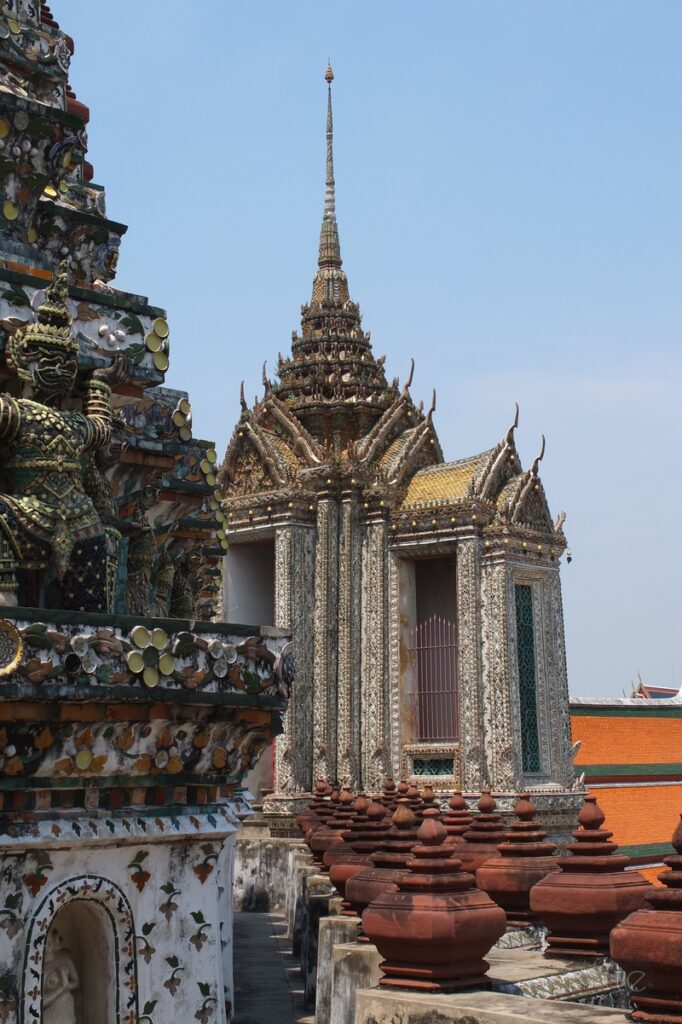
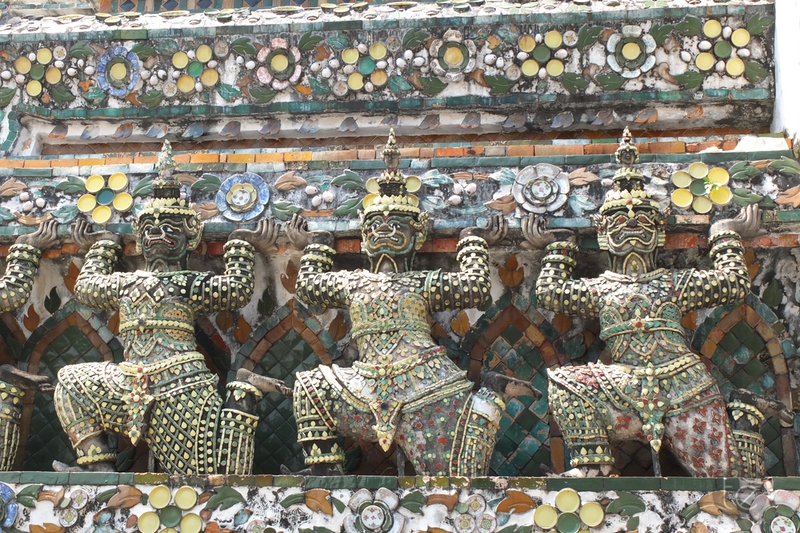
Throughout its long history, Wat Arun has undergone numerous restorations and renovations, ensuring that its splendour endures for generations to come. The most recent restoration, completed in 2017, sparked some controversy due to the temple’s altered appearance. However, proponents argue that these efforts were vital in preserving the temple’s original beauty and historical integrity.
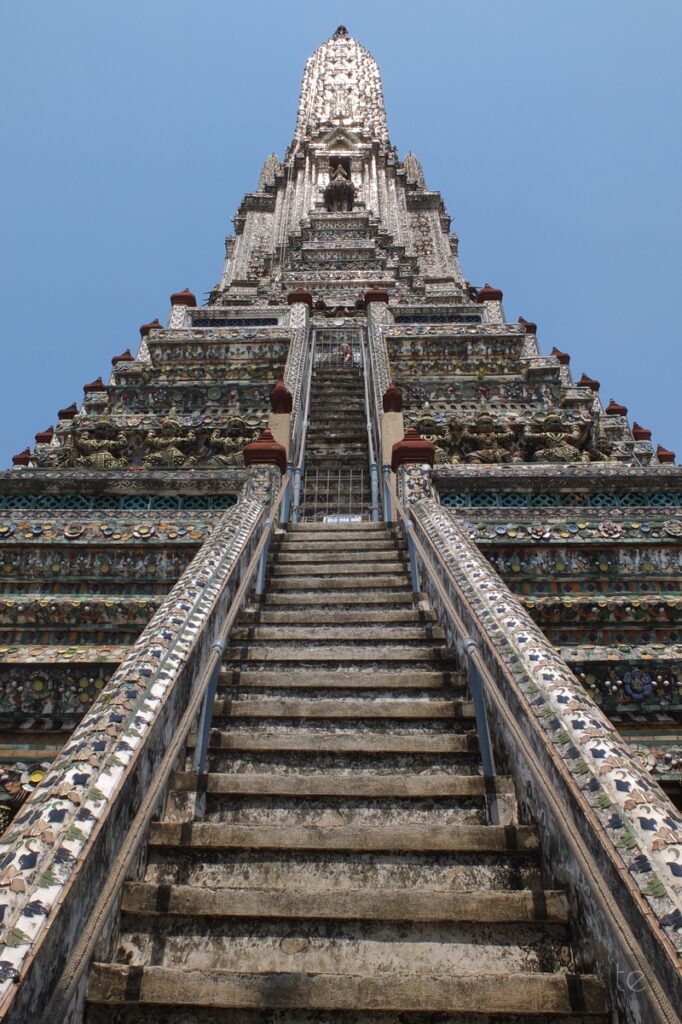
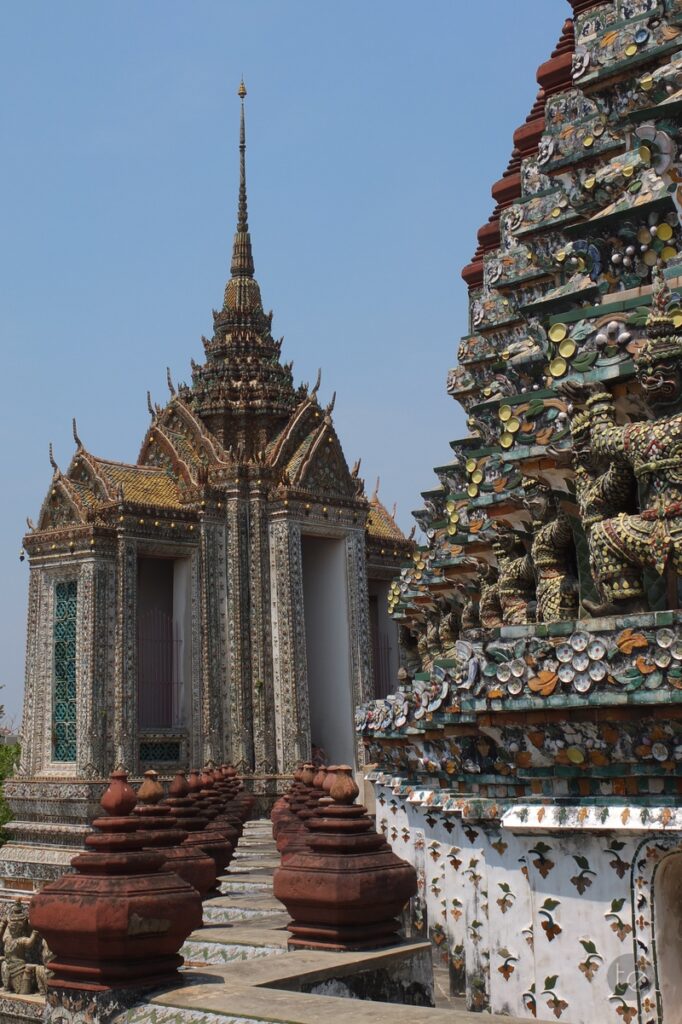
For travellers seeking a glimpse into Thailand’s rich cultural tapestry and spiritual traditions, Wat Arun beckons as a must-visit destination. Whether admiring its architectural wonders, contemplating its cosmic symbolism, or simply basking in the serenity of its surroundings, a visit to this iconic temple promises an unforgettable experience.
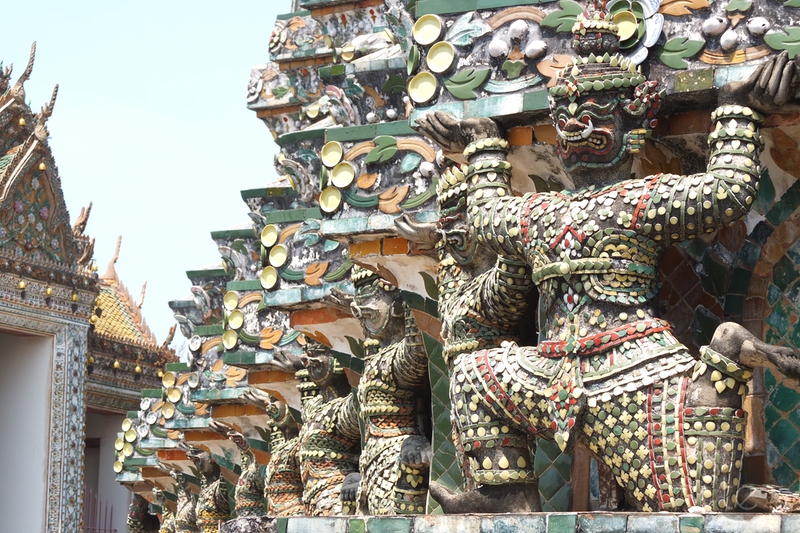
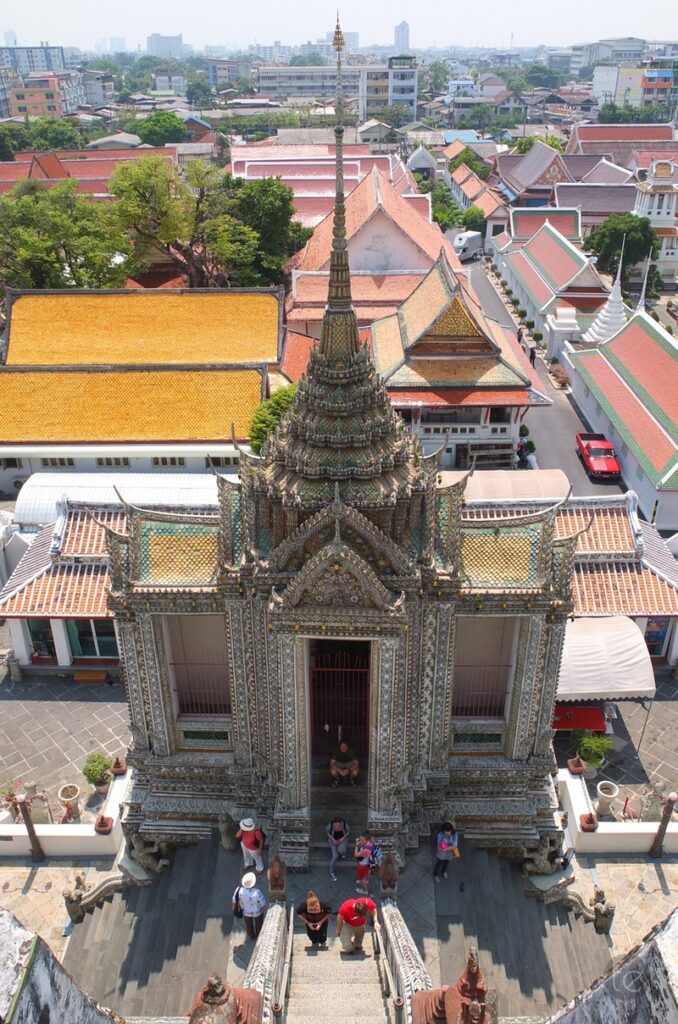
As the sun sets over the Chao Phraya River, casting a kaleidoscope of colours upon Wat Arun’s silhouette, one can’t help but marvel at the timeless splendour of this cultural gem—a beacon of light guiding travellers on a journey of discovery and enlightenment.
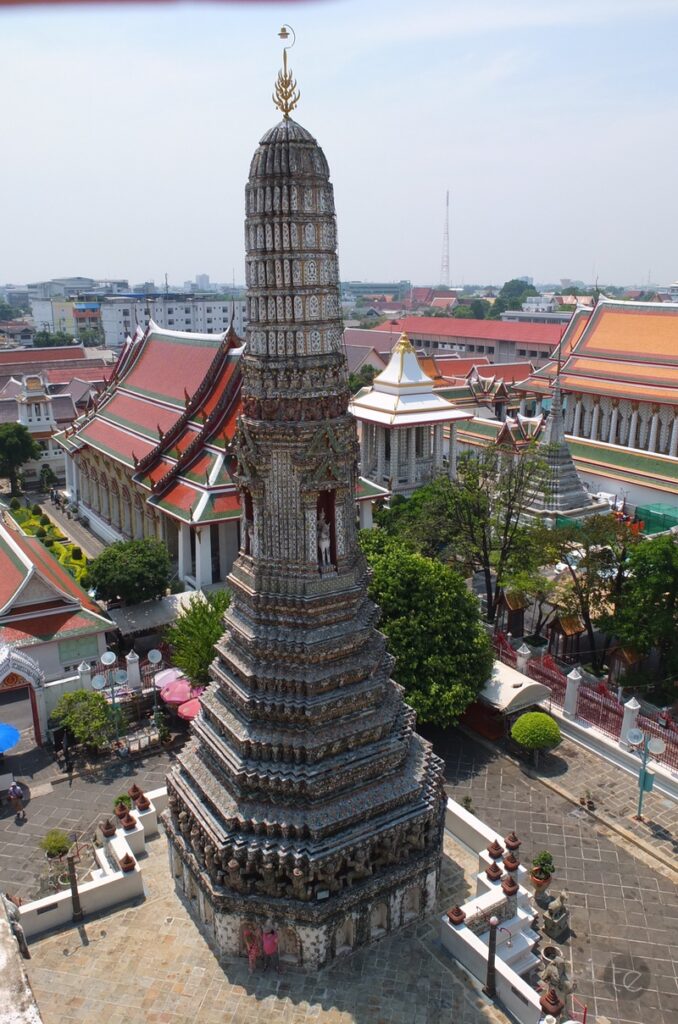
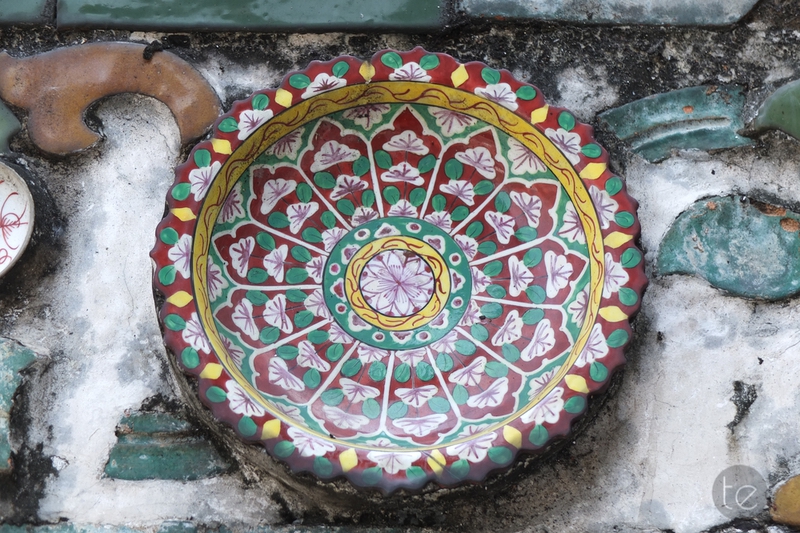
In the heart of Bangkok, amidst the bustling cityscape, Wat Arun stands as a reminder of Thailand’s enduring heritage and the eternal quest for spiritual awakening. As the dawn breaks anew each day, so too does the promise of renewal and transformation, embodied in the timeless beauty of this sacred sanctuary.
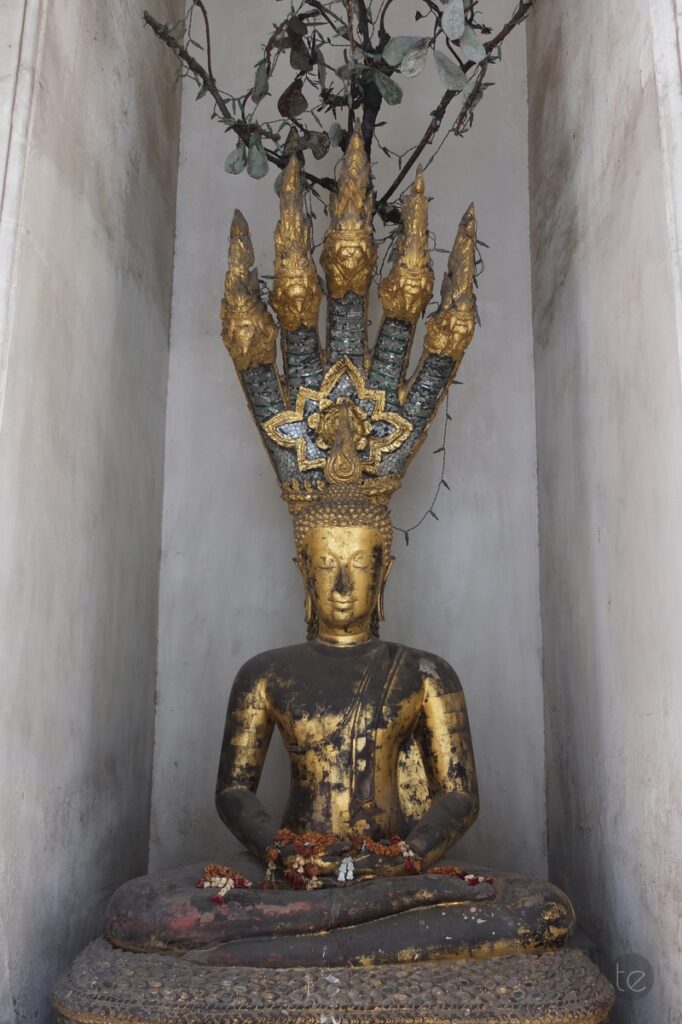
Thanks for visiting and reading. Consider subscribing to the Substack newsletter today to get the latest posts delivered directly to your mailbox. Please do not steal images from the website. All images are watermarked and copyrighted. Feel free to engage by leaving a comment below. Until next time.
Here are 10 lesser-known facts about Wat Arun:
- Original Name: Wat Arun was originally known as Wat Makok, named after the village of Bang Makok where it was built. Its name was later changed to Wat Chaeng by King Taksin during his reign.
- Hindu Influence: Despite being a Buddhist temple, Wat Arun bears significant Hindu influence in its architecture and iconography. The temple’s central prang, for example, symbolizes Mount Meru, a sacred mountain in Hindu cosmology.
- French Cartographic Mention: Historical records suggest that Wat Arun was depicted on French maps during the reign of King Narai (1656–88), showcasing its early significance even beyond Thailand’s borders.
- Guardian Figures: The entrance to the ordination hall of Wat Arun is guarded by two demon figures, known as temple guardians. These demons are characters from the Ramakien, Thailand’s national epic, adding a mythical element to the temple’s ambiance.
- Porcelain Adornments: One of the distinctive features of Wat Arun is its intricate decorations made from porcelain shards. These porcelain pieces were originally used as ballast by boats travelling from China to Bangkok and were later repurposed to embellish the temple’s façade.
- Satellite Prangs: While the central prang of Wat Arun is the most renowned, the temple also features four smaller satellite prangs surrounding it. These satellite structures contribute to the temple’s overall symmetry and aesthetic appeal.
- Chinese Pavilions: Alongside its predominantly Thai architecture, Wat Arun also includes six pavilions in the Chinese architectural style. These pavilions, made of green granite, provide a unique juxtaposition of cultural influences within the temple complex.
- Restoration Challenges: The restoration of Wat Arun’s prang in recent years faced several challenges, including the delicate task of replacing broken tiles and restoring the temple’s original appearance. The restoration work aimed to balance preservation with modern conservation techniques.
- Symbolism in Murals: Inside the ordination hall, visitors can admire murals that date back to the reign of King Rama V. These murals depict various Buddhist narratives and symbolize the rich cultural heritage of Thailand.
- Symbolic Levels: According to Buddhist iconography, the central prang of Wat Arun is believed to represent three symbolic levels: the base symbolizes Traiphum, indicating all realms of existence; the middle represents Tavatimsa, the Tusita Heaven where desires are fulfilled; and the top denotes Devaphum, indicating the six heavens within seven realms of happiness.
